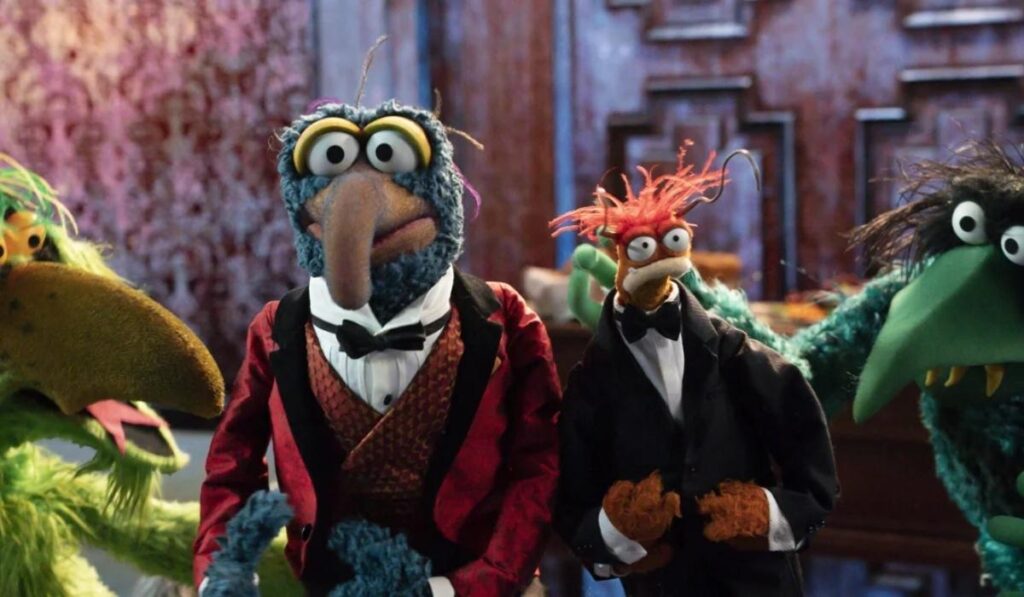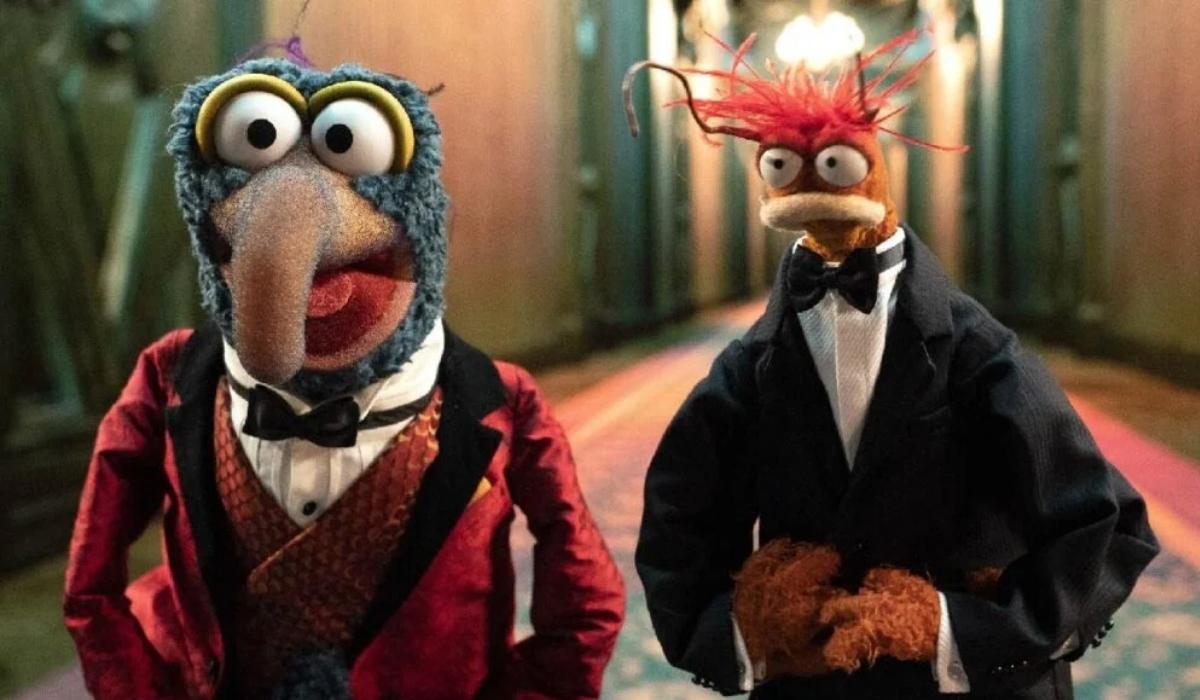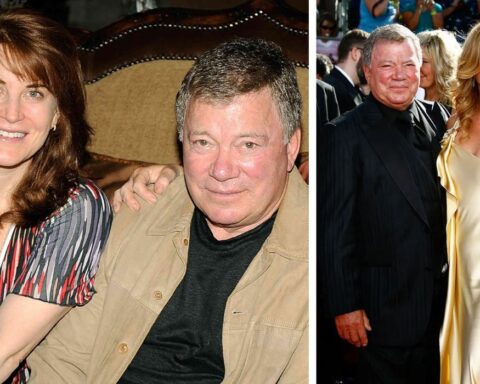The Muppet With Long Hooked Beak is one of the more visually distinct and memorable characters to appear in the wide universe of Muppet productions. While many of the most popular Muppet figures rely on expressive faces, bold color schemes, or over-the-top personalities, this particular character stands out primarily because of its long, hooked beak. This feature alone creates a standout profile on-screen, making the character instantly recognizable even in crowded ensemble moments. The Muppets have always embraced unique and imaginative designs, but the Muppet With Long Hooked Beak remains especially interesting because of the way its physical structure contributes to comedic expression, movement, and storytelling.
Origins and Development of the Character

The origins of the Muppet With Long Hooked Beak trace back to the experimental era of Muppet character creation, when the show’s designers frequently introduced new figures with exaggerated features to explore how puppetry could push the boundaries of comedic expression. The creators often tested unique shapes and proportions to discover what visual elements translated best on camera. The long hooked beak was intentionally crafted to produce a sharper, more humorous silhouette, blending avian characteristics with playful exaggeration. Over the years, the character was refined through small adjustments in color, facial structure, and movement style, but its defining hooked beak always remained consistent.
Character Design and Visual Traits
The design of the Muppet With Long Hooked Beak is one of the most distinctive aspects of its identity. The beak, long and curved downward, not only gives the character its name but also shapes its entire expressive range. Unlike characters with wide mouths or soft snouts, the hooked beak offers limited but highly focused movement possibilities. Its profile allows puppeteers to create dramatic nods, sharp turns, and expressive pecks, all of which contribute to comedic timing. The eyes, positioned close to the top of the beak, emphasize the curvature and add an exaggerated sense of alertness or curiosity.
Personality and Behavior Across Appearances

While some Muppet characters have well-defined personalities that evolve over time, the Muppet With Long Hooked Beak is more subtle, serving as a versatile performer who can adapt to the comedic needs of different scenes. In many sketches, the character is portrayed as excitable or slightly frantic, using its beak and expressive movements to react dramatically to the chaos around it. In other moments, it appears calm, observant, or confused, which also adds comedic value. Its personality is often shaped by the context of the skit, making it flexible enough to appear in musical numbers, crowd scenes, or comedic misunderstandings.
Contributions to Muppet Productions
Throughout its various appearances, the Muppet With Long Hooked Beak has contributed significantly to the visual richness of Muppet productions. While it rarely plays the lead role in a sketch, it is valuable for ensemble performances where expressive reactions and unique silhouettes create memorable moments. The character often supports musical numbers, dances in group performances, and appears in comedic background sequences. Its exaggerated beak movements make it ideal for reaction shots, especially when a skit involves surprising or chaotic events. Even though the character may not receive speaking lines in every appearance, its physical expressiveness often steals brief moments of attention, adding a distinct comedic flavor to scenes.
Impact on Audience and Fan Communities

Despite not being a major character, the Muppet With Long Hooked Beak has developed a surprising level of recognition among long-term fans and character enthusiasts. Many viewers appreciate the character’s distinctive design, noting that it symbolizes the creativity and playfulness that define the Muppet brand. Discussions in fan communities often highlight the character as an example of how even lesser-known Muppets contribute meaningfully to the overall atmosphere of Muppet productions. Some fans enjoy identifying background characters and tracking their appearances across shows, and the Muppet With Long Hooked Beak is frequently noted in these conversations due to its unmistakable profile.
Symbolic Meaning of the Hooked Beak Design
The hooked beak is more than just a physical trait; it plays a symbolic role within the creative universe of the Muppets. The exaggerated beak reflects the Muppets’ long-standing tradition of embracing imperfection, odd proportions, and whimsical distortions that subvert expectations. Characters like the Muppet With Long Hooked Beak remind viewers that the Muppets thrive on diversity, both visually and emotionally. The beak’s shape exaggerates avian features to the point of caricature, which fits the Muppet philosophy of blending humor with charm. It also serves a functional purpose by giving puppeteers a strong physical element to work with, enabling expressive movements that add comedic depth.
Relation to Other Bird-Like Muppets

In the Muppet universe, several characters share bird-like traits, but the Muppet With Long Hooked Beak maintains a unique identity. Unlike Big Bird, who is gentle, warm, and childlike, or Sam the Eagle, who embodies seriousness and patriotism, this character leans more toward physical comedy and exaggerated expression. It also differs from Gonzo’s turkey and chicken counterparts, which often appear in specific comedic contexts. The Muppet With Long Hooked Beak occupies a space between major roles and background characters, giving it freedom to adapt to different comedic needs. Its design is also distinct from more traditional bird-like structures, as the hooked beak creates a silhouette that is sharper and more stylized.
Why the Character Remains Popular
The continued popularity of the Muppet With Long Hooked Beak can be attributed to its memorable design, expressive personality, and ability to enhance scenes without demanding the spotlight. Fans appreciate characters that embody the creative artistry behind Muppet productions, and this character does exactly that. Its humorous movements, dramatic reactions, and unique beak design make it stand out in any setting. Additionally, its flexibility as a background performer ensures it appears in a wide variety of scenes, giving fans plenty of opportunities to spot it. Whether viewers are drawn to its unusual appearance or its comedic timing, the Muppet With Long Hooked Beak remains an iconic character within the larger Muppet ensemble.
Conclusion
The Muppet With Long Hooked Beak is a testament to the creativity, imagination, and artistic freedom that define the Muppet universe. While it may not be a leading character, its unique design and expressive movements make it an essential part of many Muppet productions. Its hooked beak not only distinguishes it visually but also serves as a tool for comedic expression. The character’s presence enriches musical numbers, group performances, and comedic skits, highlighting the importance of background characters in creating a vibrant and engaging world. For fans who appreciate the wide range of Muppet personalities and designs, the Muppet With Long Hooked Beak stands out as a charming and unforgettable figure.
FAQs
1. Who is the Muppet With Long Hooked Beak?
- This character is a bird-like Muppet recognized for its long, curved beak and expressive appearances in various ensemble scenes.
2. What makes the hooked beak important?
- The hooked beak enhances the character’s comedic movement and creates a unique silhouette that stands out on-screen.
3. Does this Muppet have a major role in the series?
- The character usually appears in supporting roles, musical numbers, and background scenes rather than leading storylines.
4. Is the Muppet With Long Hooked Beak related to other bird characters?
- It shares general bird-like traits but is not directly connected to major bird characters such as Big Bird or Sam the Eagle.
5. Why do fans recognize this character?
- Its distinctive design, expressive movements, and consistent presence in ensemble scenes make it memorable to viewers.









